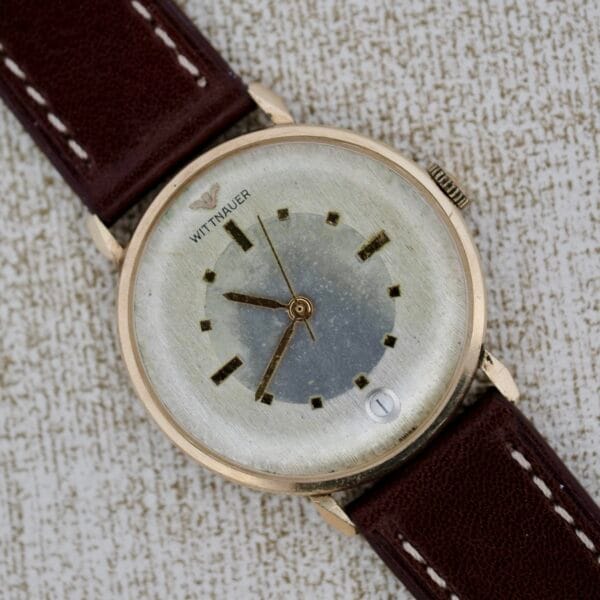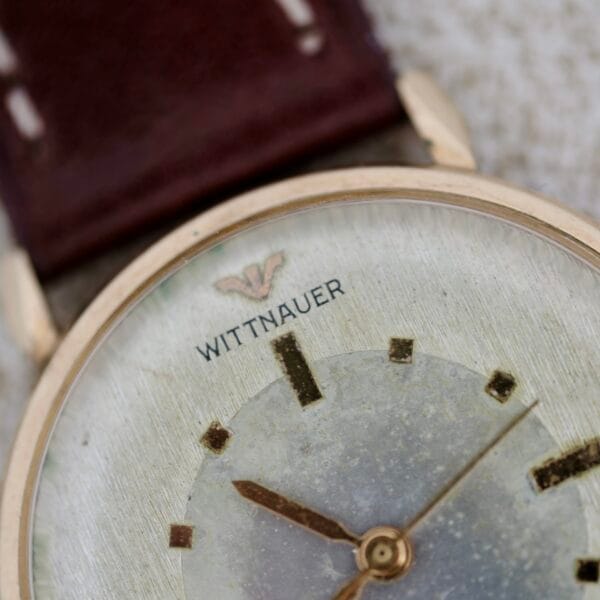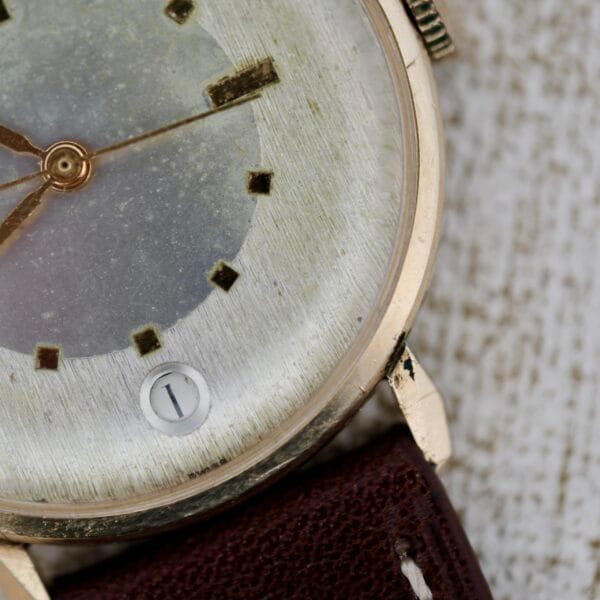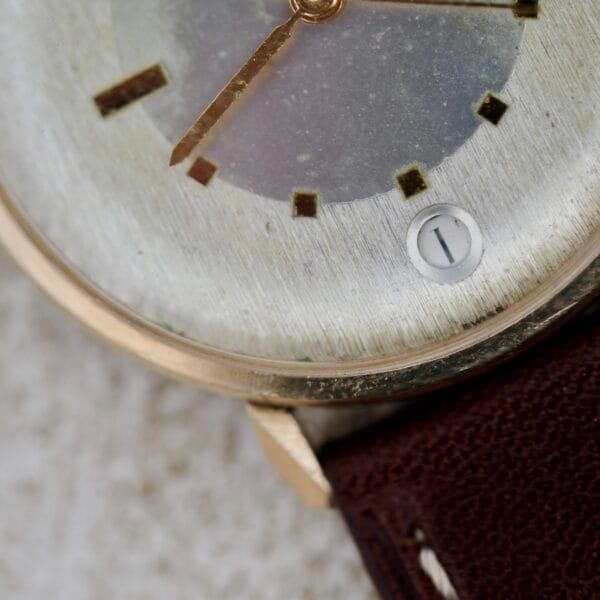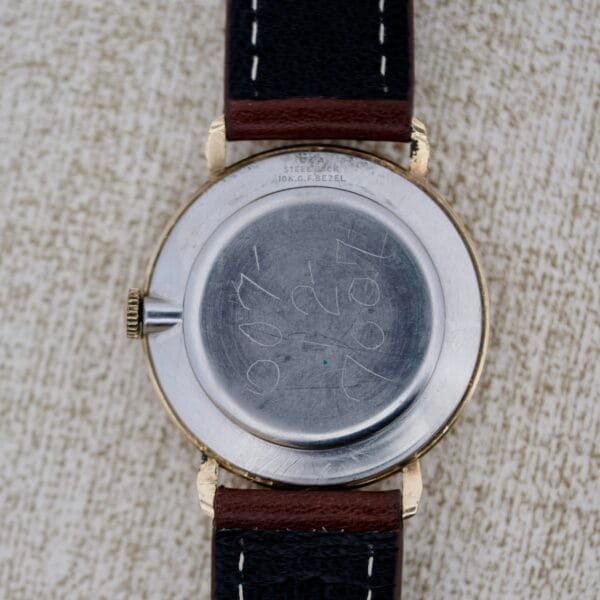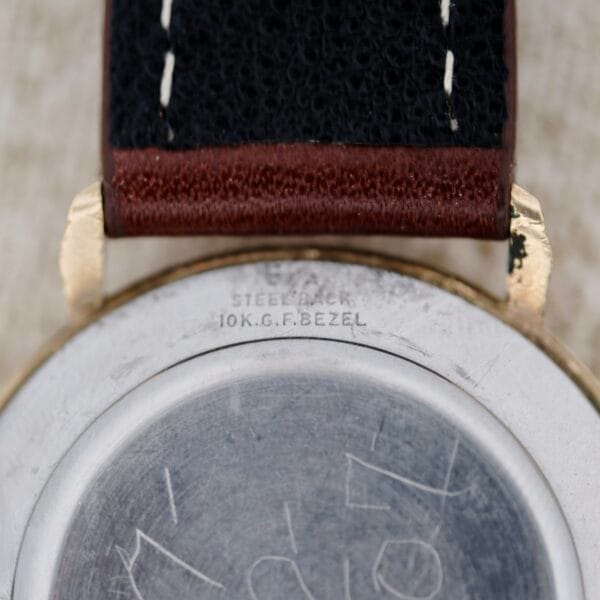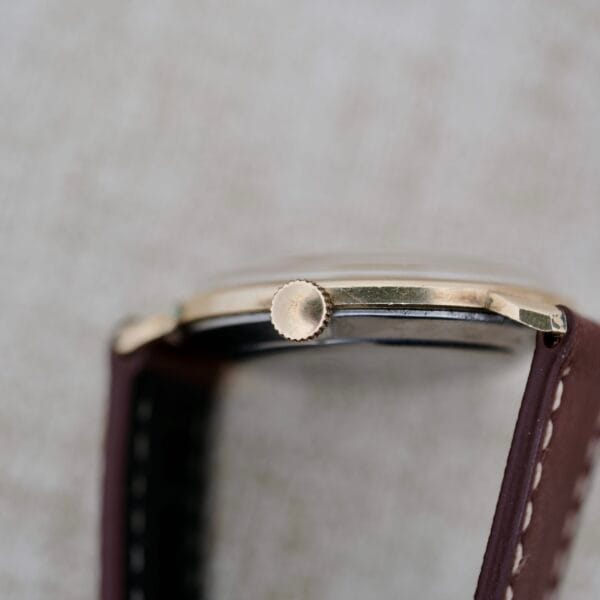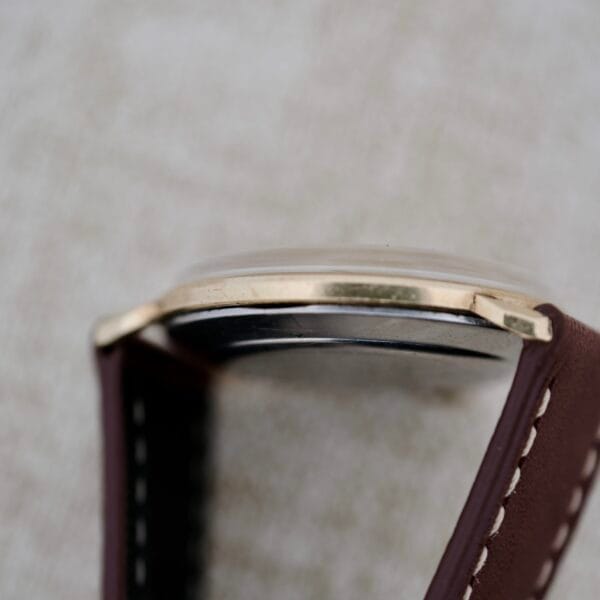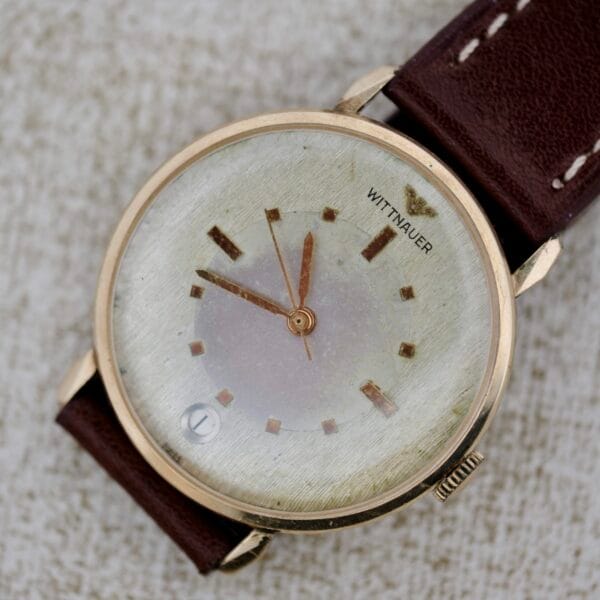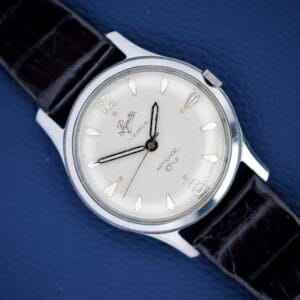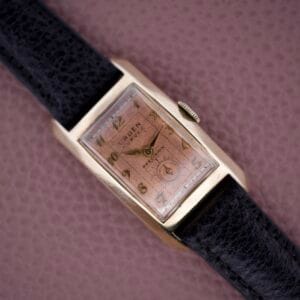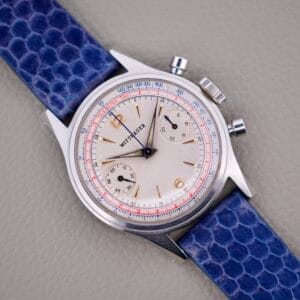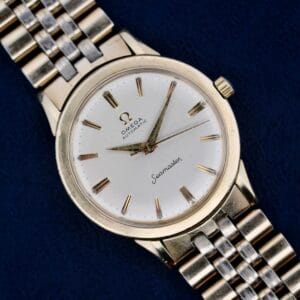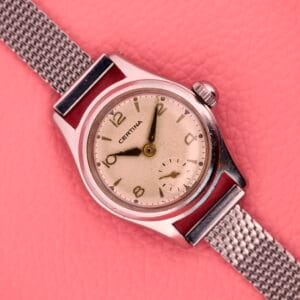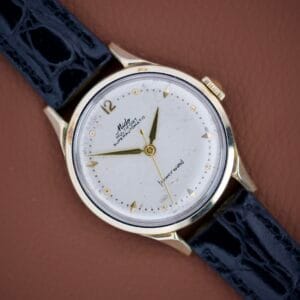There’s a certain magic to mid-century watch design that is simply impossible to replicate. It was a time of boundless creativity, where brands like Wittnauer played with texture, light, and geometry to create timepieces with incredible personality. While they produced a wide range of watches, from rugged tool watches to elegant dress pieces, it’s their quirky, stylish, and sometimes delightfully eccentric designs that we find most compelling today. They represent a brand that wasn’t afraid to take chances, offering a unique flavor that stands out in a sea of more conservative designs.
The defining characteristic of this era, and this watch, is a focus on the fine details of the dial. It was a canvas for artistry. Here, we see that philosophy in full effect, most notably with the use of faceted, or “applied,” hour markers. These weren’t simply printed on the dial; they were individually crafted and attached, with angled surfaces designed to catch and play with the light from any direction. It’s a detail that gives the watch a dynamic, almost jewel-like quality on the wrist. When paired with classic dauphine hands, it creates a look that is pure, distilled mid-century elegance.
This particular example, a Wittnauer Reference 627-1-215, is a fantastic study in the charm of a life well-lived. The 34mm stainless steel case, with its clean lines and simple, straight lugs, provides the perfect frame for the main event: the dial. The original silver finish has developed a stunning and honest patina, a sort of cosmic speckling that vintage collectors prize. This is not damage; it is the watch’s unique fingerprint, a story of its journey through time that cannot be replicated. The faceted indices remain bright, and the original lume on the dauphine hands has aged beautifully. An unusual and very pleasing touch is the date window, correctly placed at 6 o’clock for visual balance, a feature often seen on more high-end pieces of the era.
Inside this handsome case is the Wittnauer Caliber C11WS, a reliable and robust manual-wind movement. There is a simple, tactile pleasure in winding a watch like this each morning, a daily ritual that connects you directly to the mechanical heart of your timepiece.

